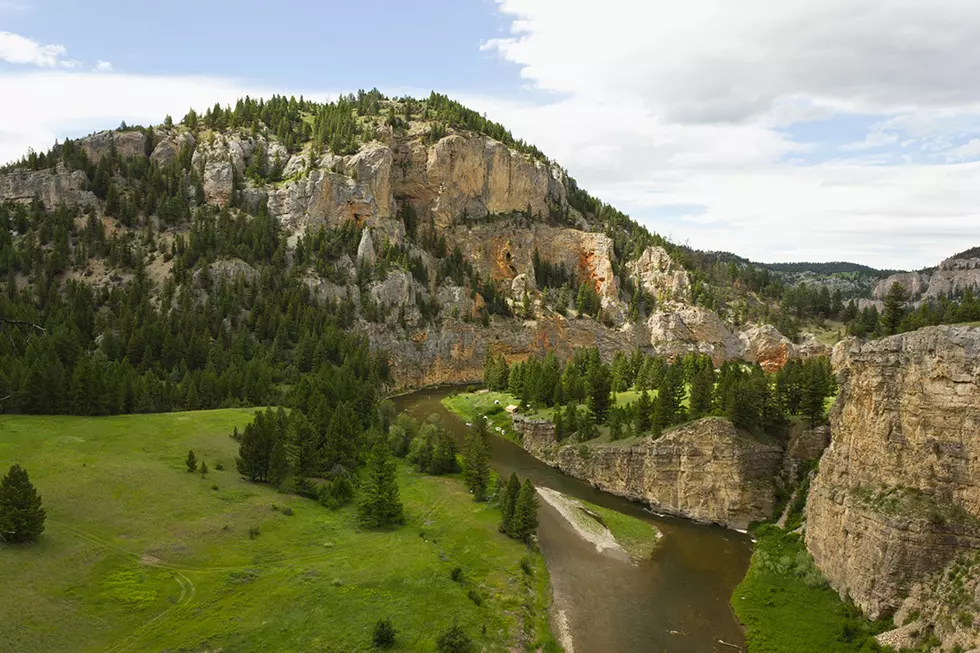
DEQ poised to grant permit to Canadian company for Smith River mine
The state of Montana has finalized an environmental report that would allow an Australian company to mine the mountains above the Smith River State Park.
On the afternoon of Friday the 13th, as most people were dealing with potential school closures and event cancellations due to the COVID-19 pandemic, the Montana Department of Environmental Quality released a final environmental impact statement that would allow Australia-based Sandfire Resources to start building the Black Butte copper mine in the Little Belt Mountains north of White Sulphur Springs.
DEQ Director Shawn McGrath signed a letter saying the final environmental report addresses all the issues and concerns raised during public comment since a year ago when the initial EIS was released. But some Montanans disagree.
Although the agency chose to modify the proposed alternative, it wouldn’t change anything related to the opening or 20 years of operations. But once the mine shuts down, Tintina would be required to backfill the mineshaft to restore the pre-existing groundwater flow and to use cemented tailings to backfill sections of the shaft that pass through sulfide-ore bodies.
That’s because exposure of such ores to air and water can produce sulfuric acid, which could then infiltrate the groundwater.
“The Agency Modified Alternative would minimize exposed reactive surfaces and potential water quality impacts within the mine workings at closure,” McGrath wrote.
A handful of environmental groups reacted to announcement with disappointment.
“The changes that DEQ has made to the proposal are a Band-Aid on a gunshot wound to the heart. There are major environmental concerns that they have not addressed,” said David Brooks, Montana Trout Unlimited executive director.
The environmental groups – including American Rivers, Earthworks, and the Montana Environmental Information Center - have vigorously opposed the mine for the past six years, starting even before the original company, Canada-based Tintina Resources, submitted its proposal to DEQ.
Currently, the mine is to be sited on private land, so the groups had fewer avenues to oppose it. But some are worried that, once it gets an opening, the company may eventually try to tunnel below adjacent Forest Service land.
While some of the citizens of White Sulphur Springs welcome the mine for its prospective jobs, the environmental groups are concerned that the mine poses threats to nearby Sheep Creek and ultimately the Smith River. That’s because Sheep Creek dumps into the Smith River at the point where, each year, thousands launch their boats on a 56-mile, multi-day ride through the high-walled canyons of the Smith River State Park.
Along with being a favorite destination of floaters and fishermen, the Smith River supports an outfitting industry and brings revenue to White Sulphur Springs and Montana State Parks. That could disappear if an accident results in mining waste ending up in the Smith River.
While digging the underground mine, crews would pump thousands of gallons of groundwater out of the mineshaft as it angles into the earth a half-mile from Sheep Creek. That could reduce the flow of Sheep Creek, which often doubles the flow of the Smith River where the two streams converge at Fort Logan.
Brook said the Black Butte proposal has several issues. But the biggest are threats to water quality and quality.
“We know that the water rights the company applied for are being granted. But whether they are legal and will they actually mitigate lost water from the mining is a big concern,” Brooks said. “As far as water quality, the cemented tailing facilities are sited in wetlands and below the water table. So they have high sulfide waste and a high chance of creating acid drainage in the groundwater.”
McGrath said the DEQ hasn’t made a final decision but could issue a record of decision within 15 days.
The environmental groups have already said they are going to fight the decision in the courts. They will have to submit that challenge within 60 to 90 days.
“We’ve asked for months for some heads-up as to when this would happen. We’ve heard this was going to come out in late 2019, and now, here it is months later,” Brooks said. “We are working with our legal team on several litigation options that we will pursue regarding the many ways this EIS fails to protect the Smith River.”
Should the court challenge fail and the mine move forward, the groups are also concerned with the possibility that Sandfire Resources will be leaving the job unfinished, like so many mines in Montana, and taxpayers will be stuck paying for reclamation. Brooks pointed to DEQ’s recent Montana Tunnels mine reclamation proposal, which will require millions more in reclamation money but the mining company has already defaulted on its bond, so Montana is on the hook.
The groups have tried to pass Legislative bills to improve the bonding process but none have succeeded. So even though DEQ is poised to grant a permit, no one knows how much Sandfire needs to put up for a reclamation bond yet.
“One of the ongoing concerns we’ve had with the process: there’s no calculation of the bond until the mine is permitted. So the public has no ability to weigh in on the bond calculation,” Brooks said. “It’s never come up with a total that has covered full mine reclamation.”
Contact reporter Laura Lundquist at lundquist@missoulacurrent.com
